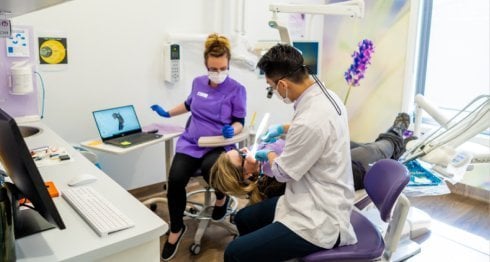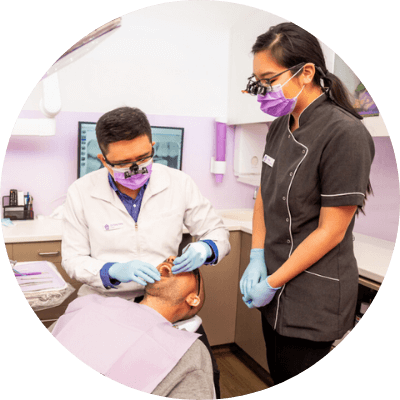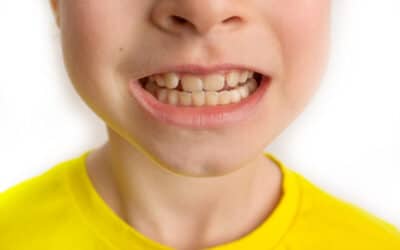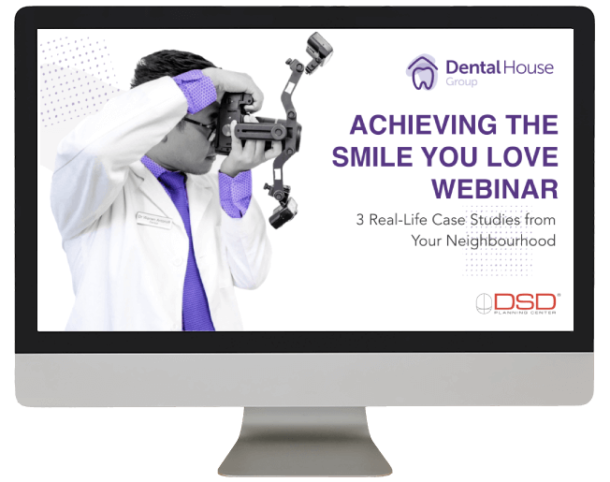The Tooth Regeneration of Mice … And Men?
The Tooth Regeneration of Mice … And Men?
How is it that different tooth replacement strategies evolved? Which mechanisms prevent the replacement of human teeth?
Homo sapiens, as we know, are limited to two sets of teeth; the second replaces our deciduous, or “baby teeth”. There are of course reptiles, fish, and elasmobranches (sharks and sawfish etc) that regenerate teeth indefinitely during their lifetime.
Mice, however, have just one single set.
Lead by Professor Abigail Tucker, researchers at the King’s College, London, studied dental development in mice in order to understand the evolutionary drivers. In the area that forms teeth, they identified a molecular signaling pathway in the dental lamina.
Researchers had first compared dental lamina gene expression in mice with the minipig – which has two sets of teeth. They found a specific signaling, normally required for tooth replacement in other vertebrates. In mice, a rudimentary form of the dental lamina (RSDL) is missing.
Genetic techniques allowed activation of this signaling pathway in mouse RSDL. By stimulating this structure, new teeth were ultimately formed.
The study shows that RSDL may be the source of replacement teeth, and provides the experimental framework for studying other mechanisms that support dental supplementation.
A tooth is not an island, it seems.
Although it was also reported during the study, that culturing RSDL in isolation resulted in tooth formation. This suggests that previous teeth influence the development of the next.
Tooth replacement varies so much across the five classes of vertebrates, that it’s intriguing that although a mouse does not normally form more than one set of teeth, given the right signals it has the potential to do so.
This diversity raises two questions. Evolutionarily, how did these different tooth replacement strategies evolve? And developmentally, which mechanisms prevent replacement teeth in animals that have lost them?
This is relevant to human tooth replacement, because cellular structures similar to RSDL have been identified, next to the permanent teeth as they develop. This shows, therefore, that in the development of human teeth, the second set of permanent teeth basically inhibit the generation of a third set.
Published in Development, the bi-weekly peer-reviewed scientific journal in the field of advances in biology, the study’s paper describes how the RSDL activity absent in mice, actually forms, but then disappears – halting the generation of another set of teeth.
This is not the only time, or the only way teeth have been artificially developed. Scientists have grown rudimentary teeth from the most unlikely of sources – including human urine.
A laboratory study used pluripotent, or immature stem cells from human urine to grow teeth-like structures in a group of mice. (Poor mice. They don’t have a good time, do they.) Pluripotent cells have the potential to develop into any type of human cell, and these were combined with early dental tissue obtained from mouse embryos.
After a few days, this cultured human stem cell, mouse tooth material was implanted into the kidneys of a different group of mice. Three weeks later, researchers dissected and examined the kidneys of the experimental mice. Tooth-like structures had been produced; biologically comparable to mouse and human teeth.
Of the 30% that were found to have produced this material and despite its deficient dental solidity, these new structures contained dental pulp, dentin, enamel space, and dental organ.
Sounds like something Lurch would play I know; but it’s a cellular collection in a developing tooth that lies above the dental papilla – which gives rise to the dentin and the pulp of the tooth.
The advantage of using urine as a source is that it’s a piece of piss to collect stem cells, compared to the existing techniques involving bone marrow.
The Guangzhou Institutes of Biomedicine and Health study concluded that human urine-induced pluripotent stem cells (iPSCs) are capable of tooth-like generation, containing enamel, and with physical properties similar to that of human teeth. It suggests that iPSCs could be a future source of stem cell research for tooth regeneration.
According to Professor Chris Mason, a stem cell scientist at University College London, considers urine a piss-poor starting point.
“It is probably one of the worst sources,” he said. “There are very few cells in the first place, and the efficiency of turning them into stem cells is very low.”
He warned that the risk of bacterial contamination was much higher than with other sources of cells.
“You just wouldn’t do it in this way.”
Professor Mason added, “The big challenge here, is that teeth have a pulp with nerve and blood vessels which have to integrate to get permanent teeth.”
To date, the King’s College team have used only dental tissue obtained from mice, and grown teeth in mice. Caution is useful to exercise when assuming any generalisation for human teeth regeneration from either of these findings so far; even the breakthrough experiments of the King’s College have not been a complete success with only a third developing ‘teeth’. Hardness in these structures has been severely lacking, at only about 30%.
So you could maybe eat McDonald’s with them. A joy for some I know.
The concept of being able to regenerate lost or damaged teeth is both fascinating and despairing in equal parts: for if worldwide oral health were easily achievable, with affordable access to healthy foods and dental care, the biology we have would remain perfectly suitable.
It has been for at least the last 300,000 years or so.
Then came sugar.
The substance thats production occupies so much of the planet for such minimal benefit to humanity.
Its major output is a global public health crisis that’s been centuries in the making; small potatoes in the six million years we’ve been around. Over 200 years, profit as always, has and continues to outstrip the potential and possibility for a healthy planet populated by healthy people.
What this new research really tells us, is look after your teeth. They’re the only ones you have. Unless you have ready access to a fully equipped genetics laboratory, teams of scientists and a time machine, all you ever have to do is brush properly at least twice a day, floss, see your dentist twice a year, and don’t dream of an oral health formula better than that
Note: All content and media on the Sunbury Dental House website and social media channels are created and published online for informational purposes only. It is not intended to be a substitute for professional medical advice and should not be relied on as health or personal advice.
Services we mentioned:
More Dental Articles
Some Sweet News For Diabetes Sufferers With Gum Disease
Diabetes type 2 is a scourge for sufferers and those with it know that well. Here is some sweet news for diabetes sufferers with gum disease. A new study performed at the University of Buffalo School of Dental Medicine made some helpful findings in this regard. The...
Bruxism In Children: Is It Influenced By Screen Time And Sugar?
Children gnashing & grinding their teeth asleep in bruxism – a scene from a horror movie. Overstimulation of sensitive minds…
Let The New Year Bring New Commitment To Your Oral Care
If you can be inspired to make one new year’s resolution this year let it be for your dental health. Let the New Year bring new commitment to your oral care in 2024 and beyond. This is no mere dentist’s selfish wish but a call for an understanding about just how...
Having A Smart Mouthguard Is A Life Changing Game Changer
In early 2023, the top league of professional players in Australasia, the NRL, along with Football Australia, acknowledged before a Senate committee the link between head trauma and serious neurodegenerative disease. Representatives from the major Australian contact...













